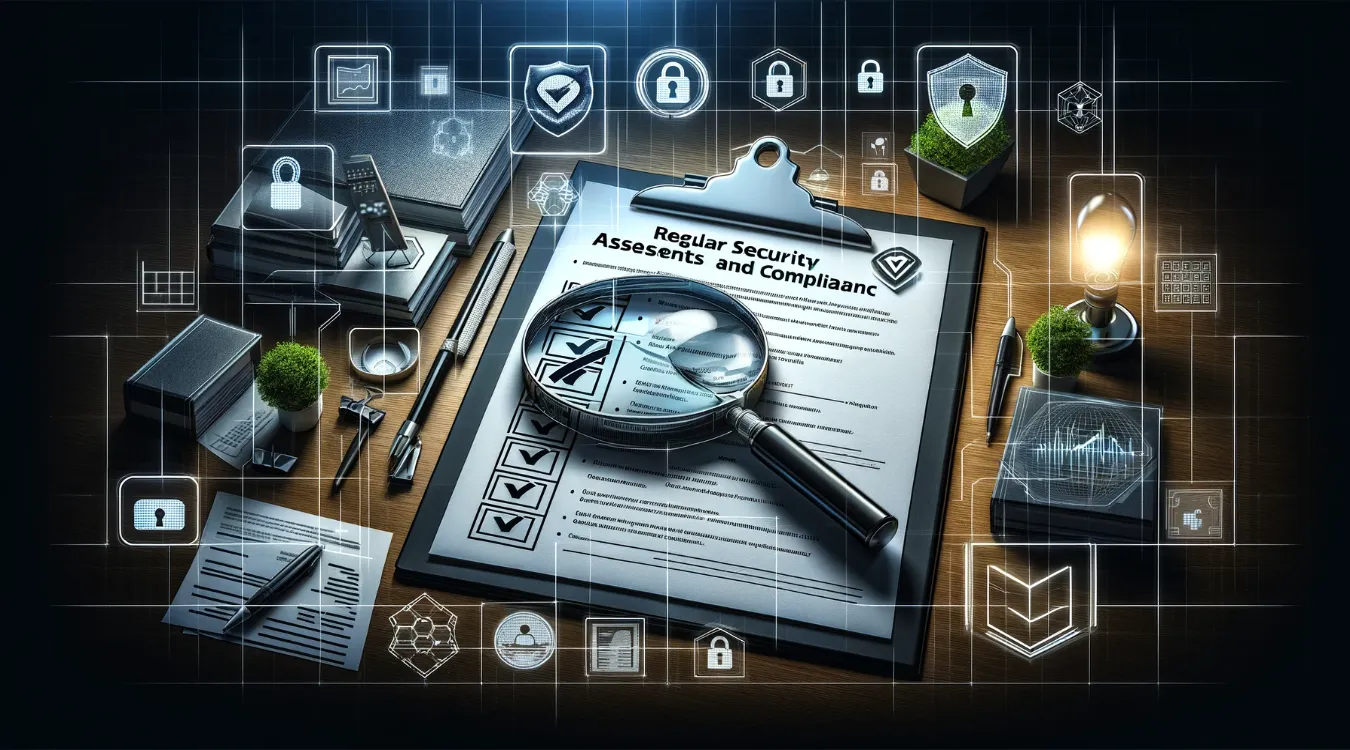In an era where digital transformation dictates the operational backbone of businesses, data security emerges as a paramount concern. For enterprises like Cyberus Systems, headquartered in Maryland and catering to a diverse clientele, the imperative to safeguard sensitive information is both a duty and a strategic imperative. This commitment transcends the mere prevention of financial losses; it is about upholding the company’s reputation, ensuring customer confidence, and securing the enterprise’s future in a competitive landscape. As cyber threats grow more sophisticated and widespread, the task of protecting business data becomes increasingly complex, necessitating a vigilant and multifaceted approach to cybersecurity.
The essence of data security in today’s business environment is irrefutable. With the advent of digital operations, companies become stewards of vast quantities of confidential data, encompassing everything from personal customer details to proprietary corporate intelligence. A compromise of this data can lead to immediate financial repercussions, including substantial fines and potential legal actions, and inflict long-term damage on a company’s reputation, eroding trust and loyalty among customers and partners. Hence, robust data security is not merely a regulatory compliance requirement but a critical component of a business’s value proposition.
Furthermore, the landscape of data security is in a state of constant flux, marked by an arms race between cybersecurity professionals and cyber criminals. The latter continuously devise new methods to infiltrate systems and exploit vulnerabilities, making the task of securing data an ongoing challenge. The proliferation of technologies such as cloud computing, the Internet of Things (IoT), and mobile connectivity expands the potential attack surface, introducing new vulnerabilities and complicating the security matrix. Concurrently, the regulatory environment is tightening, with frameworks like the General Data Protection Regulation (GDPR) and the California Consumer Privacy Act (CCPA) imposing stringent requirements on data privacy and security practices.
Against this backdrop, businesses require a comprehensive strategy that integrates technological, organizational, and cultural measures to enhance data security. Cyberus Systems exemplifies this holistic approach by delivering bespoke security solutions tailored to the unique needs of each client. Leveraging cutting-edge technology and deep domain expertise, the company proactively identifies and mitigates threats, ensuring that its clients can confidently navigate the evolving cyber threat landscape. This strategic focus on preemptive protection, combined with a commitment to facilitating seamless operations and transparent cost structures, underscores Cyberus Systems’ role as an indispensable ally for businesses striving to fortify their data security measures in an increasingly digital world.
Understanding the Threat Landscape

The threat landscape in cybersecurity is dynamic and constantly evolving, posing a significant challenge for businesses striving to protect their digital assets. Companies like Cyberus Systems, operating at the forefront of cybersecurity solutions, are acutely aware of the myriad threats that businesses face today. Understanding these threats is crucial for developing effective strategies to mitigate them. Here, we delve into the types of cyber threats that are currently prevalent and examine some recent statistics that highlight the urgency of robust cybersecurity measures.
Types of Cyber Threats Facing Businesses Today
- Phishing Attacks: These are among the most common cyber threats, where attackers deceive employees into revealing sensitive information by masquerading as a legitimate entity in digital communication. Phishing attacks are becoming increasingly sophisticated, leveraging social engineering techniques to bypass traditional security measures.
- Ransomware: This form of malware locks or encrypts a victim’s data, demanding a ransom for its release. Ransomware attacks can cripple business operations and are notorious for their rapid spread and destructive capability.
- Advanced Persistent Threats (APTs): These are prolonged and targeted cyberattacks in which an intruder gains access to a network and remains undetected for an extended period. APTs are typically aimed at stealing data rather than causing immediate damage.
- Insider Threats: Not all threats come from outside the organization. Insider threats can occur when employees, contractors, or business associates misuse their access to an organization’s network, leading to intentional or unintentional data breaches.
- DDoS Attacks: Distributed Denial of Service (DDoS) attacks aim to overwhelm a system’s resources, rendering it inaccessible to legitimate users. These attacks can disrupt business operations and services, leading to significant financial and reputational damage.
Recent Statistics on Data Breaches and Cyber Attacks
- According to a report by IBM, the average cost of a data breach in 2020 was $3.86 million globally, highlighting the significant financial impact of these incidents.
- A study by the Ponemon Institute found that the average time to identify and contain a breach was 280 days, indicating the challenges businesses face in detecting and responding to incidents promptly.
- The Cybersecurity and Infrastructure Security Agency (CISA) reported a significant increase in ransomware attacks targeting various sectors, underscoring the growing threat of this type of malware.
- Verizon’s 2021 Data Breach Investigations Report noted that 85% of breaches involved a human element, emphasizing the importance of cybersecurity awareness and training for employees.
These statistics underscore the critical need for businesses to adopt comprehensive cybersecurity measures. Cyberus Systems is at the cutting edge of this battle, providing state-of-the-art security solutions tailored to each client’s unique needs. By staying informed about the latest threats and leveraging advanced technologies and expert knowledge, Cyberus Systems empowers businesses to defend themselves against the ever-changing cyber threat landscape, ensuring the security and integrity of their critical assets.
How to Keep Data Secure in a Business: Establishing a Strong Security Foundation

In the contemporary digital ecosystem, establishing a resilient security foundation is imperative for businesses aiming to protect their critical assets from cyber threats. Cyberus Systems, a leader in providing innovative cybersecurity solutions from its base in Maryland, underscores the importance of a robust cybersecurity policy and framework as the bedrock of any organization’s security posture. This foundational approach is not just about deploying technologies but creating a comprehensive ecosystem that encompasses policy, culture, and continuous improvement to mitigate risks effectively.
The Role of a Cybersecurity Policy in Business
A cybersecurity policy serves as the cornerstone of an organization’s security strategy, articulating the standards, procedures, and protocols that govern the protection of its information assets. It’s a formal declaration of the organization’s commitment to safeguarding its digital and physical information resources. For businesses, the formulation and implementation of a cybersecurity policy are crucial steps in delineating responsibilities, guiding employee behavior, and establishing the basis for security practices and decisions.
A well-crafted cybersecurity policy, as advocated by Cyberus Systems, should:
- Define the scope of the organization’s information assets, including data, devices, and network systems.
- Specify acceptable and unacceptable use of these assets, ensuring employees understand their roles in maintaining security.
- Detail the measures for access control, data encryption, incident response, and recovery to guide the organization’s approach to managing and mitigating risks.
- Comply with legal and regulatory requirements, ensuring that the organization adheres to industry standards and legal obligations concerning data protection and privacy.
Essential Components of a Cybersecurity Framework
A cybersecurity framework, on the other hand, provides a structured approach for managing and reducing cybersecurity risks in a way that is consistent with business objectives. It is an overarching system that encompasses policies, guidelines, and tools designed to help organizations identify, protect, detect, respond to, and recover from cyber threats.
Key components of a comprehensive cybersecurity framework, as implemented by Cyberus Systems for its clients, include:
- Identify: Establishing a clear understanding of the organization’s business context, the resources that support critical functions, and the related cybersecurity risks. This involves creating an inventory of assets, assessing risk, and prioritizing resources based on their criticality and value to the business.
- Protect: Implementing appropriate safeguards to ensure the delivery of critical infrastructure services. This includes access control measures, data encryption, security training for employees, and maintenance of security policies.
- Detect: Developing and implementing activities to identify the occurrence of a cybersecurity event promptly. This involves continuous monitoring of information systems and the deployment of detection technologies to identify anomalies and potential threats.
- Respond: Taking action regarding a detected cybersecurity incident. The response plan includes communication, analysis, mitigation activities, and improvements to prevent future incidents.
- Recover: Planning for resilience and timely recovery to normal operations to reduce the impact of a cybersecurity incident. This includes disaster recovery plans and business continuity plans.
For businesses like those served by Cyberus Systems, integrating these elements into a cohesive cybersecurity framework not only fortifies their defense mechanisms but also aligns their security initiatives with overall business objectives. This strategic alignment ensures that the organization can anticipate, withstand, and rapidly recover from cyber threats, thereby safeguarding its assets, reputation, and stakeholder trust in the long term.





